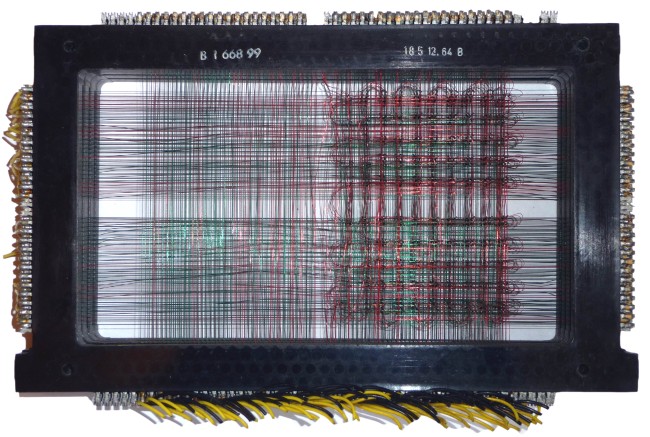Core Memory (4)
| Home > Browse Our Collection > Peripherals > Core Memory > Core Memory (4) |
|
The attached photographs show early examples of core memory matrix. Magnetic core memory, or ferrite-core memory, is an early form of random access computer memory. It uses small magnetic ceramic rings, the cores, through which wires are threaded to store information via the polarity of the magnetic field they contain. Such memory is often just called core memory, or, informally, core.
These were very kindly donated by Mike Voss.
Interesting comments received from Roger Broughton of Newcastle University:
The core storage looks like 4 planes of 40 x 10 cores so 1600 bits It looks like 4-wire core storage The two X & Y orthoganal half pulse drive wires plus a diagonal inhibit wire and the other diagonal sense wire. Later core storage was just three wire. The third wire was used for both sense on read cycle and inhibit on write cycle It looks to predate kdf9 (1964), postdates whirlwind (1952), so I think circa 1960 but no idea from what computer. Roger Broughton has a fascinating website at http://www.staff.ncl.ac.uk/roger.broughton/museum/index.htm covering:
Firmware - The programming between software and hardware.
Date : UnknownCore Storage - Random Access Memory before chips. I/O Media - Input to, and output from computers before keyboards and screens. DASD - Direct Access Storage Devices, now known as Hard Drives. Circuitry - Now known as mother boards and graphics cards. Physical Description : core memory unit, in two parts This exhibit has a reference ID of CH4642. Please quote this reference ID in any communication with the Centre for Computing History. |
|












